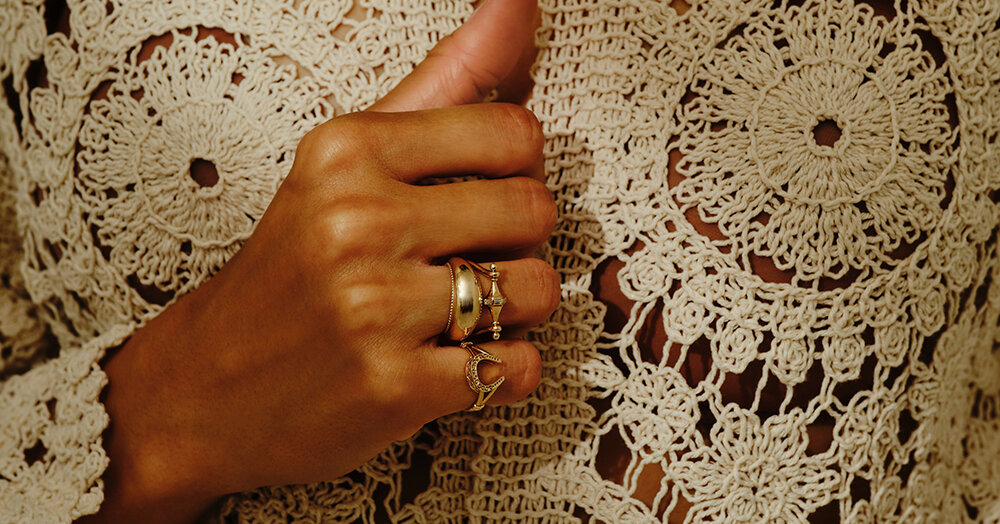Fidget jewelry, the movable pieces that behavioral experts say can help control nail-biting and other anxious habits, don’t have to look like therapy devices. Rather, its designers say, the helpful features can be hidden in elegant rings and pendants.
For example, the Thai jewelry brand Kavant & Sharart sought to meet the human instinct to fidget “in this crazy, fast-paced world” with “something elegant, mindful and emotionally comforting,” its co-founder, Shar-linn Liew, wrote in an email.
So many of the pendants, necklaces and earrings in its Kaleidoscope collection feature small rotating discs in yellow, white or rose gold — think tiny wagon wheels with their spokes lined in diamonds, sapphires or garnets.
Ms. Liew said the designs, which are $1,690 to $36,500, were inspired by how light and angles transform perception, “echoing a kaleidoscope’s shifting and all too mesmerizing movement.”
As the founder of the London jewelry brand Métier by Tomfoolery, Laura Kay said in an email that she has “always been drawn to the beauty of tiny details.”
And she described her Ojo Mudra oval spinner pendants, which are featured on rings, necklaces, hoop earrings and cuff bracelets, as “tiny wearable sculptures designed to soothe” when gently spun.
Available in three shades of gold, the gem-studded pendants are secured on a rod by two spheres to ensure a spinning motion that feels “continuous and effortless” to the touch, Ms. Kay said. Prices are 195 to 2,400 British pounds ($255 to $3,160).
She said that, to stay centered, she often spun the pendant on her own Ojo Mudra necklace during long finance meetings.
Part of her inspiration for the style, she said, was recalling that when her children were young, they would play with the bracelets on her wrist as she rocked them to sleep.
“That quiet, tactile intimacy stayed with me,” she said, something she now aspires to capture in her designs so her pieces impart that “same essence of stillness and calm amid the rhythm of daily life.”
Angie Marei said in an email that the design of her Amanti Infinity spinning ring was inspired, at least in part, by her paternal grandmother’s prayer beads and how she would roll each one between her fingers while deep in prayer.
During the pandemic, Ms. Marei, who has an Egyptian heritage, had found herself turning to prayer and meditation for comfort, and discovered Tibetan prayer wheels and rings. “I thought it would be beautiful to reinterpret the idea as a luxurious meditation ring inspired by Arabesque mosaics,” she said.
Such designs informed the geometric patterns on her rings, which conceal an internal track mechanism meant to allow an outer ring to rotate smoothly with the gentle nudge of a finger or thumb. Starting at $4,500, the rings come in white, yellow and rose gold and are also available with diamonds.
The interlocking mosaic patterns “honor the sacred repetition found in Egyptian and Arabic design,” she said, and offer “a tactile reminder to pause, breathe and reconnect with oneself.”
The post Spin It. Twist It. Now, Don’t You Feel Better? appeared first on New York Times.




